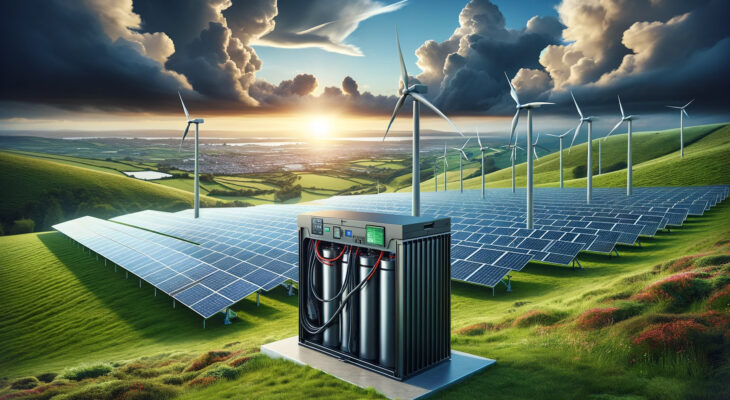The majority of residential solar power systems today are still connected to the city grid. The utility grid provides power when solar energy isn’t available, and offers a nice safety net for those using solar power. However, some people want to be more independent from the grid than this type of system would allow; that’s where backup power options come in. If you’re considering adding a backup power options to your solar power system, keep reading to learn what your options are, and the pros and cons of each choice.
Backup Generators
Generators provide backup power by burning some type of fuel, like diesel, propane, or natural gas. They’re a pretty common choice as an emergency backup option, but aren’t often used for consistent backup power on solar power systems. Generators have a lower upfront cost than a full-scale battery bank does, and can handle higher energy loads.
They’ll run consistently so long as you have fuel available, but having a constant supply of fuel on hand can be inconvenient (and expensive over time). They also produce emissions, making them a lot less eco-friendly, and can be quite noisy. Generators need regular maintenance as well, like oil changes, to continue operating efficiently.
Wind Power
Typically, prolonged periods of no or low sunlight also mean prolonged periods of stormy weather. This makes combining wind and solar power a pretty smart choice—because when the clouds cover the sun and stops solar production, the wind that brought those clouds in is typically blowing enough to make up the difference. Like solar, wind power is a clean and sustainable energy choice.
However, their energy output isn’t consistent, as it varies based on wind speeds. They can also be pricey; even a small wind turbine requires a significant investment. Some people also find them to be an eyesore, and you may not be allowed to erect one on your property at all, depending on local ordinances.
READ MORE : How to Use Visual Assortment Boards
Battery Storage Systems
Overall, battery storage systems are a much more popular backup energy choice for solar users. These battery “banks,” as they’re often called, store excess solar energy during the day for use at night or during cloudy weather. Modern battery systems integrate seamlessly with solar systems, and are highly scalable, so you can start with a small backup system and build to one that fully supports your energy needs on a nightly basis.
Battery banks can be pricey though, especially if you want to jump right into total energy independence. They will also need to be replaced roughly every 5 to 15 years depending on the type of battery you choose. Choosing a reliable battery like Pylontech rechargeable battery Peliowill require less frequent replacements, lowering your costs in the long run.

